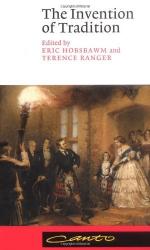|
This section contains 630 words (approx. 2 pages at 400 words per page) |

|
Chapter 7, Mass-Producing Traditions, Europe, 1870-1914 Summary and Analysis
From the previous chapters, it is clear that traditions are often invented. However, they sprang up particularly often in the thirty years prior to World War I. Traditions were created by social and political institutions. Both invented traditions to handle the rapid social transformations of the time. The state's role was largest however and it did so to expand administration, the reach of law, state education and the like. The goals of states were to invent nations, produce peoples over which each state could rule and create nationalist sentiment. Mechanisms were needed to produce obedience, cooperation and a sense of legitimacy. Transformation was most difficult when states were new.
Tradition was also used as a bulwark against the challenges of popular politics. Mass politics made many loyal and even more pressing needs and...
(read more from the Chapter 7, Mass-Producing Traditions, Europe, 1870-1914 Summary)
|
This section contains 630 words (approx. 2 pages at 400 words per page) |

|




